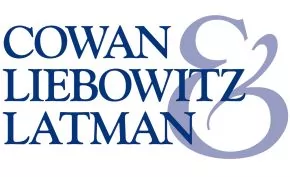Generally, a background design for a word trademark cannot be registered apart from the word mark unless the design is so intricate that it makes its own commercial impression as an inherently distinctive design.
Most background designs are common geometric shapes such as circles, squares, rectangles, triangles or ovals. Such a design fails to function as an indication of the source of the goods or services unless there is proof that the background design has acquired distinctiveness separate and apart from the word mark—known as acquiring a "secondary meaning."
Melissa & Doug, LLC applied to register a red oval with a white border as a logo for a variety of books, arts and crafts materials and kits, stationery, toys, games and puzzles, and online retail store services featuring those products.

The Applicant's product packaging and point of sale signs, such as websites through which the goods could be ordered, consistently displayed the mark as a composite mark with the words MELISSA & DOUG appearing within the red and white oval.

The Examining Attorney initially refused registration on the ground that the applied-for mark failed to function as a trademark because it was nondistinctive and without secondary meaning., The Applicant then claimed acquired distinctiveness through use, but the Examining Attorney maintained the refusal.
The Applicant appealed to the Trademark Trial and Appeal Board (TTAB), which affirmed the refusal after considering, as a whole, the factors relating to acquired distinctiveness.
- Association with a particular source. Although the Applicant did not submit a survey, it did submit 21 consumer declarations from visitors to the FAO Schwartz toy store in Manhattan who stated that they recognized the red and white oval logo. The TTAB found these declarations probative of consumer perception, albeit on a limited basis.
- Length, Degree, and Exclusivity of Applicant's use. Annual sales for more than 16 years averaged more than 100 million units valued at more than $300 million. However, Applicant had prominently and consistently displayed the applied-for mark on goods, signage, websites and social media posts only as part of its composite mark with the words MELISSA & DOUG. Nevertheless, the TTAB said this was some support that consumers might recognize the applied-for red and white oval design as a source identifier separate and apart from the word mark. However, the Applicant did not have exclusive use since there were at least 6 third-party registrations of marks having substantially similar red and white ovals with other word marks for some of the same goods. Applicant pointed to its use of a point of sale statement, "With their recognizable red-oval logo, Melissa and Doug put their names on every product they make." But the TTAB said that the red oval was not the focus of this statement, there was no evidence as to when the use of this statement started and the statement appeared only as part of a larger text.
- Amount and manner of advertising. Applicant did not submit any advertising figures because it did not advertise through television or print media. The TTAB said that advertising expenditures, particularly related to any "look-for" advertising, would be important for such an inherently non-distinctive mark.
- Amount of sales and number of customers. Although the annual worldwide sales were substantial, the TTAB regarded this as being of limited probative value because the applied-for mark was always displayed as part of the composite mark with the words.
- Intentional copying. The Applicant alleged that infringing products imported from overseas copied its trade dress, but the evidence showed that the imports replicated other elements in addition to the red and white oval, so the TTAB could not conclude that the alleged copiers believed that consumers would perceive the applied-for mark as a source identifier on its own.
- Unsolicited media coverage. In the absence of evidence on this point, the TTAB did not consider it.
Since the applied-for mark was a common oval shape, the colors were red and white, and the Applicant used the applied-for mark exclusively as a carrier for the word mark MELISSA & DOUG, the TTAB found that more was needed to establish acquired distinctiveness.
In re Melissa & Doug, LLC, Application No. 87915069 (T.T.A.B. January 8, 2021).
Author's Note: If you seek a trademark registration for a common geometric shape or other design feature of packaging or product trade dress, your limited chances of success would be improved by taking some or all of these steps:
- Make at least some uses of your design mark separate and apart from any word mark and keep copies.
- Use a "look-for" slogan pointing to your design mark on packaging, advertising and promotion and place it apart from other textual material so it is not buried.
- Consider taking a survey to establish that the relevant consumers recognize your design mark as an indication of source.
- Engage a trademark watch service to be alerted to any applications to register a similar mark.
- Ask your distributors to inform you of any similar marks seen in the marketplace.
- Take prompt steps to stop any third party from using or seeking to register a similar mark.
- Keep a separate account of your expenditures for advertising which features or mentions your design mark.
- Keep a file of any unsolicited media or consumer mentions of your design mark.
The content of this article is intended to provide a general guide to the subject matter. Specialist advice should be sought about your specific circumstances.

